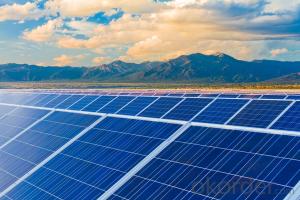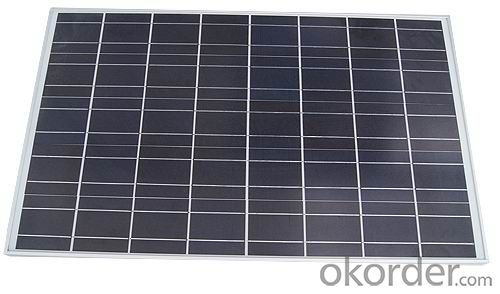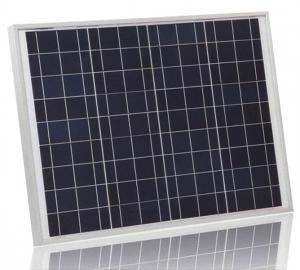Solar Panels Canada - Polycrystalline Solar Module TPB156x156-60-P
- Loading Port:
- Ningbo
- Payment Terms:
- TT OR LC
- Min Order Qty:
- 100 carton
- Supply Capability:
- 10000 carton/month
OKorder Service Pledge
OKorder Financial Service
You Might Also Like


Specification:
· Highest performance enabled by higher efficiency monocrystal line cells and the latest Solar Wafer Technology for multicrystal line cells
· Lower weight design which reduces the total system load on a roof, making it ideal for residential customers. Its shape allows for better roof utilization
· Its low weight means easier handling for installers
· Modules are designed to withstand PID (Potential Induced Degradation)*
· High light transmission Anti-Reflective Glass with improved self-cleaning capability
· 0/+5 W Positive power tolerance for reliable power output
Warranty
CNBM Solar provides one of the most comprehensive module warranties in the industry:
· 10 years for product defects in materials and workmanship
· First 12 years for 90% of warranted minimum power
· Remaining 25 years for 80% of warranted minimum power
Certification
CNBM Solar strictly carries out the ISO 9001 quality control methodology and has implemented check points at every step of the production process to ensure our product performance durability and safety. The stringent quality control process has been confirmed by numerous independent agencies and LDK Solar modules earned IEC, TUV and UL certifications.
· IEC:IEC 61215, IEC 61730 (1&2), conformity to CE
· UL 1703 2002/03/15 Ed:3 Rev:2004/06/30
· ULC/ORD-C1703-01 Second Edition 2001/01/01
· UL and Canadian Standard for Safety Flat-Plate
· ISO 9001: 2008 Quality Management Systems
· CEC Listed: Modules are eligible for California Rebates
· PV Cycle: Voluntary module take back and recycling program
· MCS Certificate



FAQ
1. How do I decide which system is right for me ?
For protection from long outages, include a generator or solar panels in your Must solar system. Shorter outages can be handled by a battery-only system.
2. Where my system will be installed ?
Must solar systems are usually wall-mounted near a home's main electrical (circuit breaker) panel.
3. How do I install my system ?
A must solar backup inverter is connected to a home electric system , we will supply detailed installation manual and videos for our customers .
How fast will my system respond to a power outage ?
Must solar inverters typically transfer to battery power in less than 16 milliseconds (less than 1/50th of a second).
What kind of batteries do the systems include ?
Must solar backup electric systems use special high-quality electric storage batteries.
- Q: How do solar panels impact air pollution?
- Solar panels have a positive impact on air pollution as they produce clean energy without emitting harmful pollutants or greenhouse gases into the atmosphere. By replacing fossil fuel-based energy sources, solar panels help reduce air pollution and improve air quality, resulting in a healthier and more sustainable environment.
- Q: Can solar panels be used to power a theme park?
- Yes, solar panels can be used to power a theme park. Solar panels can generate electricity by converting sunlight into energy, which can then be used to power various rides, attractions, and facilities within the theme park. Additionally, solar energy is a renewable and sustainable source of power, making it an environmentally friendly choice for theme park operations.
- Q: What does it take to install the solar panel? Cable wires to power source or fuse box? Anything else?How does the cable wires stay on the solar panel?
- How does the cable wires stay on the solar panel? With wire retention clips (4 per module) that are used to wrap the wire on the underside of the module frame. The home run cables to the transition box (converts between types of wire with no electrical transformation occuring) or combiner box (joins multiple source circuits in parallel, with the positives fused for safety) are usually tied along the racking system components, and with conduit sections used as needed. Racking is another big part of the installation. Don't just make your own homemade wooden rack, as these will weather away to nothing very easily, and cause great failures. GET a professionally designed metal racking system. PV modules are EXPENSIVE. Don't let the racking system cause them to break. It also requires the inverter, if you intend it to connect to the main electric service. If using multiple inverters, you need an AC combining panelboard to join them prior to entering the main electric service. Otherwise, you need to think about how else you might be using them. If you are charging batteries, you need a charge controller.
- Q: What i would like to know is if you were using commercially available solar panels, clustered as close together as possible and spread out on one acre, how much electrical energy is produced? if u can 'translate' this into terms of ( hour of average daylight = powering a ____ for X units of time)
- Solar Power Per Acre
- Q: Can solar panels be installed on churches or religious institutions?
- Yes, solar panels can definitely be installed on churches or religious institutions. In fact, many religious organizations have embraced solar energy as a way to reduce their carbon footprint and promote sustainable practices. Installing solar panels on churches not only helps them save on electricity costs but also serves as a visible commitment to environmental stewardship and can inspire the community to adopt clean energy solutions.
- Q: I want to get a solar panel to run a fan (or two) for swamp coolers.I'm not looking to power 20box fans, just maybe some of those auto fans.What the heck kind of panel do I need? What is a power inverter and what does it do?Will I lose all my power if I use a 00' extension cord?How do I choose what I'm going to need?
- Solar panels turn sunlight into direct current electricity usually at 2, 24, or 36v. You could probably have a very simple system with just a panel and a few dc fans assuming that: the panels never put out more power than the fans can handle, you don't mind the fans slowing and stopping when the sunlight fades. If you want the fans running more of the time, you will need the panel hooked to a charger that charges a car/marine type battery and the fans connected to the battery. The longer the wires, the thicker they need to be (and more expensive). If you want to use AC (alternating current like your house uses) you will need an inverter (which turns DC into AC). Each device and each section of wire loses power due to inefficiency (heat produced). Contact a solar company on line, in person, or learn more.
- Q: Can solar panels be damaged by hail or other elements?
- Yes, solar panels can be damaged by hail or other elements. Hailstones, strong winds, and other extreme weather conditions can potentially cause physical damage to solar panels, such as cracks in the glass surface or dislodging of components. However, most solar panels are designed and tested to withstand such elements to a certain extent, and reputable manufacturers often provide warranties to cover any damages caused by hail or other weather-related incidents.
- Q: Since plants have been populating this earth for the past 475 million years I think they have evolved to gain the most sun with their greenery. If scientists used heat sensors to find the hot spots of trees and trim all of the leaves that don't quot;providefor the plant, then maybe that trimmed tree could be used to become a solar quot;panelquot;. I believe that each individual leaf could be replaced by a small solar panel and the wood of the tree would be wiring that would root all of the solar panels to a generator.
- From the vantage point of a scientist and an engineer, you have a whole host of problems to overcome. The mass of solar cells cannot be supported by most leaves much less allow the leaves to turn toward the sun as they naturally do. The wood and other structures of a tree are terrible conductors and wouldn't serve as efficient power transmitters. There are issues of damaging the health of the tree by interrupting the process of photosynthesis in favor of solar energy collection, and many other issues. However, I can tell you that solar power does use several principals that you have observed in trees. For example, solar collectors are almost always oriented to face toward the sun. Many adjust with the time of day and seasons to be optimally oriented to collect the sun's rays. Much like leaves in many plants are not static but change position to optimize their angle to the sun. Also, many solar cells are now designed with a membrane structure which offer several advantages. So you see many of your observations have found their way into practical application in solar power production.
- Q: Can solar panels be installed on a historic building?
- Yes, solar panels can be installed on a historic building. However, the installation process may require careful planning and consideration to ensure minimal visual impact and preservation of the building's historical integrity. Collaboration with preservation experts, architects, and local authorities is crucial to finding a suitable solution that balances renewable energy goals with the preservation of the building's historic value.
- Q: I want to purchase some or one solar panel for my home. I don't know where to buy them from. I've loooked online and if i could buy them online that would be best, but if you knew of a website that has good prices than that would be great!Thanks
- Are you looking for the best and Affordable Solar Panels? Find and compare brands of Solar Panels for home power systems. Contact us today for more details.
Send your message to us
Solar Panels Canada - Polycrystalline Solar Module TPB156x156-60-P
- Loading Port:
- Ningbo
- Payment Terms:
- TT OR LC
- Min Order Qty:
- 100 carton
- Supply Capability:
- 10000 carton/month
OKorder Service Pledge
OKorder Financial Service
Similar products
Hot products
Hot Searches
Related keywords


























